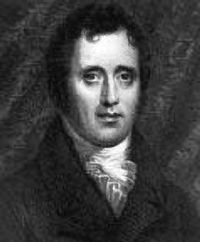Annotation:Governor Tompkins's Quick Step
GOVERNOR TOMPKINS'S QUICK STEP. American, March (6/8 time). D Major. Standard tuning (fiddle). AABB. A patriotic composition by Charles P.F. O'Hara, who included eleven of his own tunes honoring American victories of the War of 1812, and politicians of the era, in his collection of mainly traditional Irish and Scotch tunes, sold from "his new music store" at No. 70 William Street, New York, "where may be had a great variety of the most ancient ahnd modern single songs. Also a general assortment of flutes, violins, tambarines, drums, and all other musical instruments." Geoff Hore [1] (2009) remarks:
Little is known about O’Hara; he does not feature in Captain Francis O’Neill’s Irish Minstrels and Musicians published by The Regan Printing House, Chicago, 1913. It appears that he migrated to USA from Ireland in 1812, aged 31, and his occupation is given as a ‘teacher of music’. This information came from the book British Aliens in the United States during the War of 1812 by Kenneth Scott, published by Genealogical Publishing Co 1979 Baltimore. He married Phebe Elam CARLTON, daughter of Martin L and Frances Elam Carlton at Powhatan County, Virginia on 22 AUG 1816. See brideindex.info.
Researcher Nicholas Carolan [2] finds mention of O'Hara in the New York paper Columbian of January 2nd, 1813, which says that Charles P.F. O’Hara was a multiinstrumentalist who had ‘resided many years in the west of Ireland’. His name appears on a list of subscribers to a volume called A New System of Mythology, in Three Volumes; Giving a Full Account of the Idolatry of the Pagan World (by Robert Mayo M.D., 1816), that indicates O'Hara was living in Baltimore at the time.

Daniel D. Tompkins [3](1774-1825) was the governor of New York from 1807-1817 and the vice president of the United States during the two terms of James Monroe (1817-1825). He was born in Scarsdale N.Y., graduated from Columbia College in 1795 and took up the practice of law in New York City. After a few years he became involved in politics and joined the Republican party, serving in Congress in 1804, although he resigned before his term was completed to accept appointment as an associate justice of the New York Supreme Court. He was elected Governor of New York state for four consecutive terms (which we for three years in those days), before his election as Vice President of the United States. Tompkins died at his home on Staten Island in 1825.
A schooner named "Governor Tompkins" was attached to Commodore Isaac Chauncey's squadron on Lake Ontario in November, 1812, and participated in the American raid on Kingston and the capture of York and Fort George the next year. A final engagement on Lake Ontario in September, 1813, resulted in the withdraw of the British squadron and established Chauncey's control over the easternmost Great Lakes. The "Governor Tomkins" resumed blockade duty at Kingston for the remainder of the war, after which it was laid up in the American base of Sackett's Harbor. She was sold 15 May 1815.


